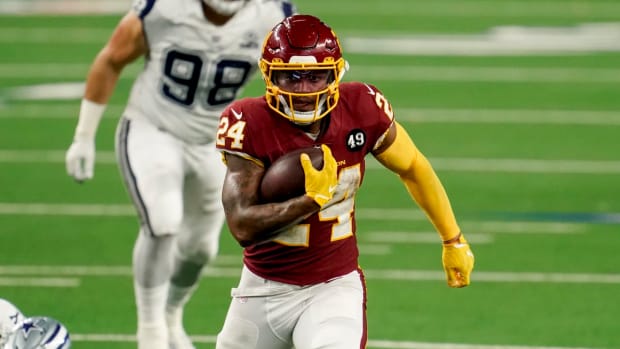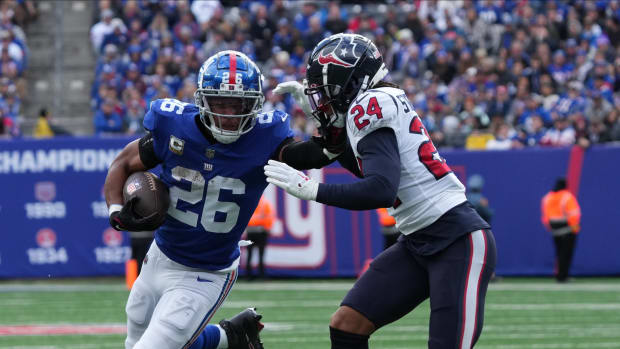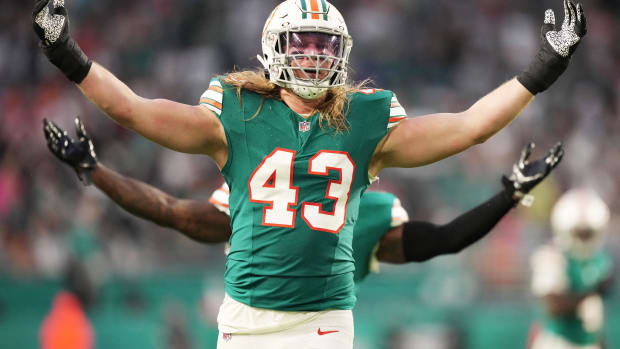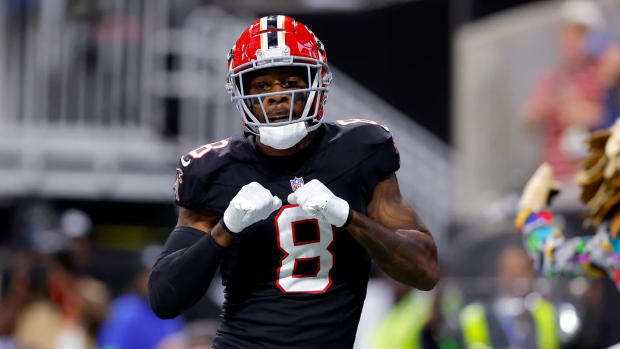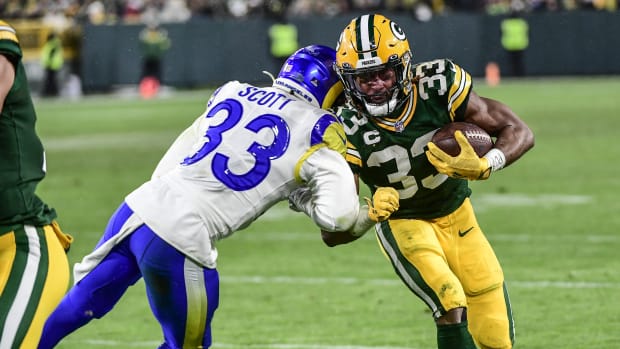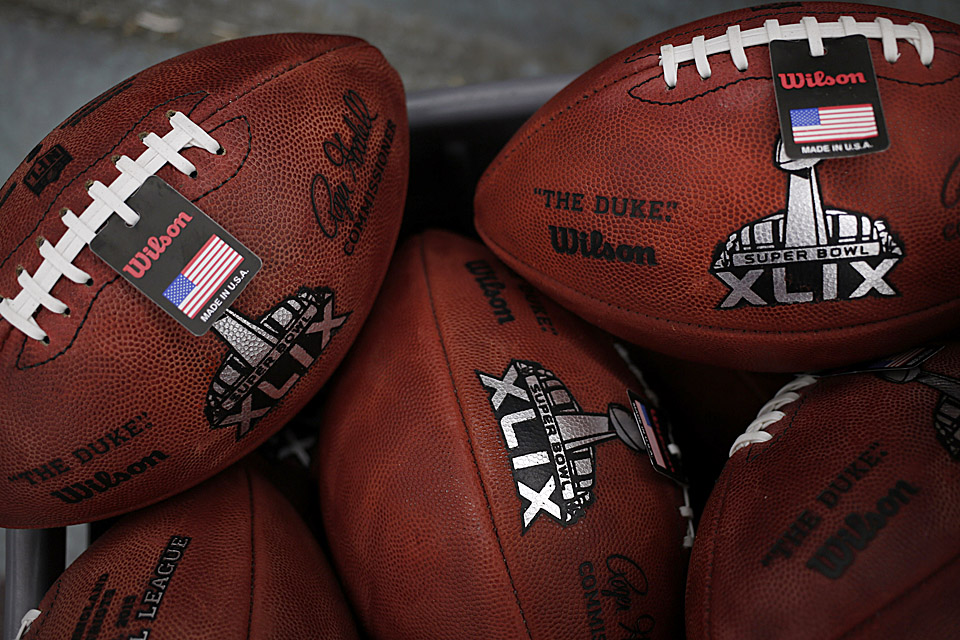
Let Brady Deflate the Ball
The most important question about Deflategate has yet to be answered: Why does the NFL even have a rule about how much air can be in a football? At the behest of Tom Brady and Peyton Manning, the league in 2006 started allowing teams to bring their own footballs to games. Quarterbacks break in these balls how they see fit. Essentially, it became legal to doctor the footballs.
Why can’t the amount of air in a ball be part of that doctoring? There’s no reason to regulate such a thing.
Brady prefers a slightly deflated football. So let him play with a slightly deflated football. Science already provides natural parameters here. Deflating a football is not like, say, using steroids. To put it in crude, elementary terms: A player on steroids could theoretically receive more and more injections and have his testosterone levels climb higher and higher. A quarterback can only deflate a football so much. Eventually the ball becomes completely flat. No quarterback would choose to play with a completely flat ball. So why does the NFL have to tell Tom Brady how much (or little) air can be in the football when the laws of physics already do?
• WATCH: How NFL officials check ball pressure and prepare game balls
Is Tom Brady a Cheater?
With no smoking gun, Roger Goodell has to rule on an all-time great whose legacy is on the line. FULL STORY
Just about every recent rules change in professional football has centered around making the game more comfortable for the offense. Fans want to see big gains and points. A ball that is easier to throw and easier to catch is a great avenue to this—and an avenue that in itself is not intrusive to the integrity of the game. Defensive and offensive schemes are not significantly altered because a quarterback is throwing strikes with an under-inflated football. If anything, the schemes become sharper because the action on the field has become sharper. With football being so much about strategy, the more comfortable the ball is for a quarterback and his receivers, the more entertaining the game becomes.
The NFL already agrees with this. Why do you think officials and ball boys go to such lengths to try to keep a football dry during a rainy game? Or, bringing it back to the inflate/deflate issue (or inflate/deflate controversy, since America has decided to be dramatic, if not hysterical, about this), why did the NFL permit quarterbacks to prepare their own balls before games in the first place?
The problem is, the league didn’t go far enough here. It should abolish all parameters regarding the ball’s air. Tom Brady didn’t cheat. Tom Brady’s job is to throw the football. Unfortunately, he had to go too far out of his way to do his job well.
• BRANDT: Yes, it’s a big deal—serious implications for Brady, Patriots
Nickel Package
1. Ever since his trade to Buffalo, LeSean McCoy has been pushed by the media to say something incendiary about Chip Kelly. On Wednesday, McCoy finally broke, saying to ESPN the Magazine: “I feel like I always respected him as a coach. I think that’s the way he runs his team. He wants the full control. You see how fast he got rid of all the good players. Especially all the good black players. He got rid of them the fastest. That’s the truth. There’s a reason.” McCoy might come to regret saying this. Because if there are reasons he was traded that go beyond football, someone from the Eagles might now be inclined to leak it.
The MMQBu2019s Draft Analysis
Andy Benoit passes along 20 thoughts after seven rounds of the draft, including his takes on blind praise for the Pats and problem players in Dallas. FULL STORY
2. By now, all sensible football minds agree that it’s completely ridiculous to grade a team’s draft just days after the event's completion. But take it a step further: it’s completely ridiculous to grade a team’s draft even years afterwards—especially negatively.
Do front office executives and coaches misevaluate players? Of course. That’s inevitable if for no other reason than college and professional football are so radically different.
But how do we know that it was misevaluation behind a draft class’s lack of success? What’s more likely: that an entire room of lifelong football experts suddenly crapped the bed on all their draft decisions one year? Or that other circumstances were involved?
How do we know a draft class didn’t fail because of poor coaching and player development? Or that injuries—not just major, but also accumulated minor ones—didn’t fundamentally change a player?
How do we know the player himself isn’t to blame? Think of your 10 best friends. Imagine if each of them suddenly became a millionaire at 22. Could you comfortably forecast how this would affect them? Could you even forecast how it would affect you?
Bad drafts aren’t just the product of bad decisions, they’re the products of many bad things happening over a long period of time. And those are mostly things about which outsiders (i.e. draft graders) can have no possible knowledge.
3. An under-the-radar but highly important signing this week: former Patriot Alfonzo Dennard to the Cardinals. Dennard is a talented young corner who was cut from an alarmingly thin Patriots cornerbacking unit. Which means there’s probably a red flag. (Recall that he fell to the seventh round of the 2012 draft because of off-field issues.) But Dennard is still a good risk for the Cardinals. Arizona’s complex defensive scheme requires corners who can line up in zone and then quickly match up man to man. Dennard can be very good in this capacity if he’s playing along the boundary. Dennard's presence along the boundary would mean Jerraud Powers could play the slot, where he’s far more effective. This also means that Tyrann Mathieu can play a true safety spot on every down, which is what the club wants for the budding star.
4. At first I was a little surprised that the Raiders released wide receiver James Jones. With the arrival of No. 4 overall pick Amari Cooper and the free agent signing of Michael Crabtree, Jones would have been demoted to a No. 3 role. That’s the same role he thrived in as a Packer. And it’s not like the Raiders were paying Jones big starting wide receiver money. He was slated for a very affordable $3.3 million salary. But the Raiders are around Jones on an everyday basis, so they’re obviously more familiar with him than I am. And one whisper about Jones from the previous coaching staff was that he couldn’t run anymore. Considering this, and considering how his game is similar to Crabtree’s (both make their living on inside routes) I guess there’s your unemployed 31-year-old wide receiver. Still, some team should sign Jones.
• PODCAST: Andy Benoit and Robert Klemko take a look back at the draft
5. I’ve spent this past week at Arizona State studying film with Ryan Silverfield, a former Vikings assistant and current Sun Devils offensive assistant. I’ve come away with more than 30 pages in notes, all pertaining to nuanced football concepts that I hadn’t thought about before. I’ll spare you the details for now but will sprinkle them in throughout my work moving forward. But it’s absolutely incredible how much goes on in a football game and how much a good coach (like Silverfield) knows. Keep in mind, in addition to scheming the 11 on 11, coaches must also teach those individual 11 pieces the mental and physical aspects of the game. Silverfield and I spent 42 minutes just going over the first two Patriots pass plays from their December game against the Dolphins last year.
Follow The MMQB on Facebook, Twitter and Instagram.
[widget widget_name="SI Newsletter Widget”]



































